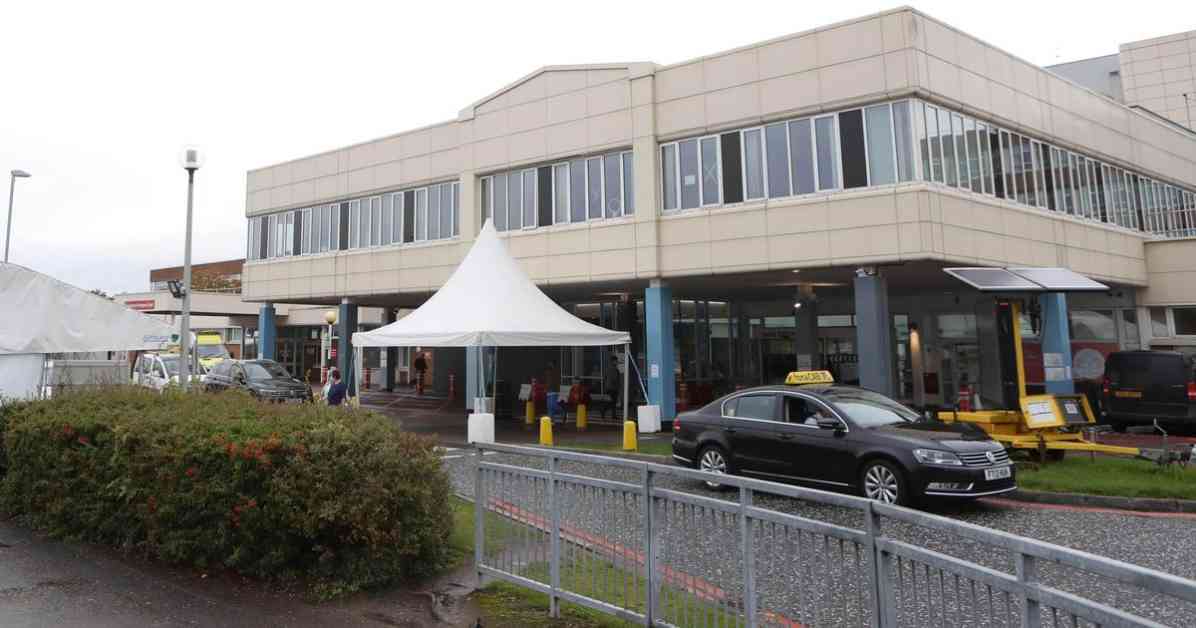Coroner Maria Dougan has determined that the tragic death of baby Troy Brady in a Northern Ireland hospital in 2016 was entirely avoidable. The coroner highlighted a series of missed opportunities in the care and treatment of the infant, leading to severe brain damage that ultimately resulted in his untimely passing. The findings of Troy’s inquest shed light on a concerning lack of informed consent and proper protocol in high-risk birth situations, prompting the call for hospitals to develop comprehensive guidelines in such cases.
Troy Brady was born at Craigavon Area Hospital on August 19, 2016, and tragically passed away six days later in the hospital’s pediatric intensive care unit. The circumstances surrounding his birth revealed a series of critical errors that could have been prevented with appropriate care and decision-making. The inquest heard that baby Troy suffered from severe head injuries due to a lack of blood and oxygen to the brain, highlighting the gravity of the situation.
One of the key issues raised during the inquest was the breech position of Troy during birth, a high-risk scenario that required careful consideration and expert handling. Despite the breech position, doctors at the maternity unit recommended a natural birth to Troy’s mother, Jane Brady, and her husband, John. Consultant Dr. Rohit Sharma initiated the delivery with Mrs. Brady in the all-fours position, a technique that was later changed to her back, leading to confusion and uncertainty in the delivery room.
Coroner Maria Dougan emphasized the importance of informed consent in such high-risk situations, noting that proper counseling and documentation were crucial in ensuring the safety and well-being of both mother and baby. She highlighted the need for clear communication between healthcare providers and patients, particularly in complex and challenging births like Troy’s. The coroner stressed that all hospitals should establish protocols for obtaining informed consent in similar circumstances to avoid tragic outcomes.
The inquest revealed that Dr. Sharma’s lack of experience and confidence in performing a pre-term vaginal breech delivery in the all-fours position contributed to the complications faced during Troy’s birth. The unconventional technique, coupled with the inexperience of the delivery team in this position, raised serious concerns about the quality of care provided to Mrs. Brady and her baby. The coroner noted that a more senior consultant should have been called upon to handle such a delicate and high-risk birth scenario.
Furthermore, the necessity to move Mrs. Brady during the birth process added to the confusion and challenges faced by the medical team, ultimately leading to delays and uncertainties in Troy’s delivery. The coroner emphasized the importance of conducting deliveries in familiar and appropriate positions, highlighting the need for proper training and expertise in handling complex breech births. Dr. Sharma’s decision to attempt an unconventional technique in a challenging situation underscored the risks associated with inadequate experience and training in such scenarios.
In light of the findings from Troy’s inquest, the coroner called for greater emphasis on patient education and informed consent in high-risk birth situations. She stressed the need for hospitals to develop clear protocols and guidelines for handling complex deliveries, ensuring that healthcare providers are adequately trained and prepared to address challenging scenarios. The tragic death of baby Troy serves as a stark reminder of the critical importance of effective communication, informed decision-making, and expert care in safeguarding the lives of mothers and babies during childbirth.
Overall, the findings of the inquest into Troy Brady’s death highlight the need for systemic changes in how high-risk births are managed in healthcare settings. By prioritizing informed consent, clear communication, and expert care, hospitals can prevent avoidable tragedies like Troy’s and ensure the safety and well-being of mothers and babies in challenging birth scenarios. The lessons learned from this heartbreaking case must be heeded to prevent similar incidents in the future and uphold the highest standards of care in obstetrics and maternity services.




